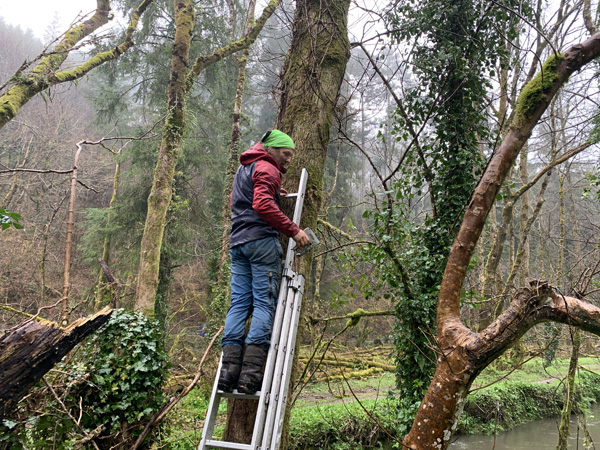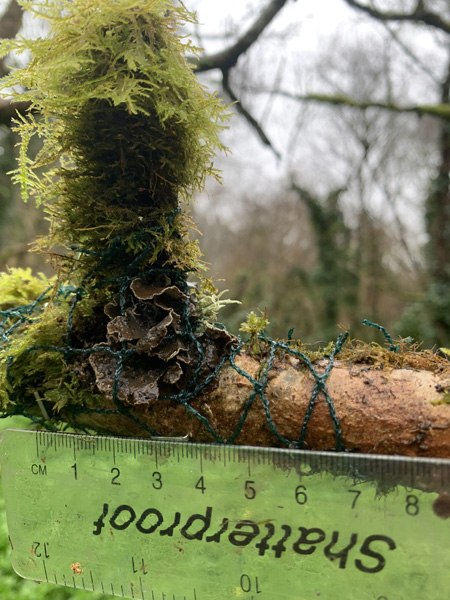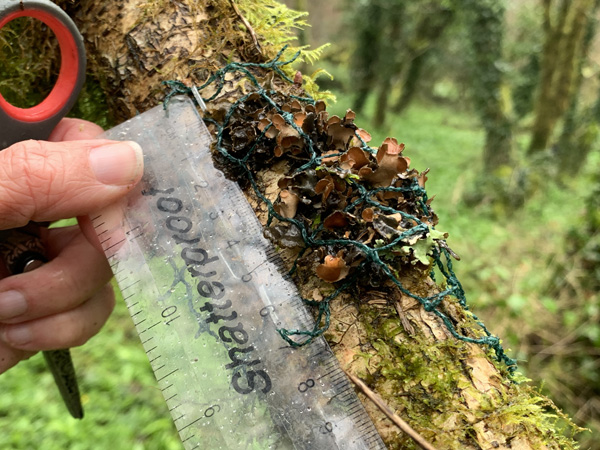Nigel and I (with Happy Habitats) recently helped with the translocation of lichens from the affected ash trees at Seaton onto surrogate trees. Specifically, willow, hazel and sycamore as well as a healthy ash. Importantly they need to remain in the same location, as these conditions aren’t replicated in most woodlands.
These woodlands are only found in western Scotland, Wales and the SW but by no means does Cornwall have many. The abiotic factors such as clean oceanic air quality, the aspect, the moisture and humidity levels count for a great deal of what is required. Some wet woodlands but by no means all, have conditions that cross over.
Luxuriant growth of mosses, liverworts and lichens alone are not telling us it’s a temperate rainforest. Most woodlands have plenty of many species but its these specific species, as well as the specific moss indicator species I often refer to is how we tell one woodland apart from the next.
So whilst there is a lot of hype and ambiguous info out there on the subject currently, there is still way more to learn. I for one am glad of my training since 2018 with Plantlife who have been studying this subject for approx. 15 years.
The press releases etc have often shown someone either simply discussing planting certain species of tree as part of the restoration process or stroking isothecium mysoroides (one of the most common of woodland species). It’s disappointing to be honest. I have seen very little discussions on the exciting but unchangeable abiotic differences or the specific indications that make them what they are. This is not a subject that is clearly understood, whilst millions have pounds have been announced to help. I can only hope that Plantlife are fully engaged. They reached out to many of us who use and work in woodlands, to arm us with the correct information. Subsequently Woodland Trust and Natural England also stepped in. Without Plantlife’s and WT’s knowledge base involved, I can’t see how temperate rainforest restoration will be adequate.
Every day we learn something new through our observations and we’re glad of the resources available to us to interact with those that do. Plantlife’s helpful toolkit can be found here.
Seaton Valley Woods
The felled ash trees with late stages of Ash Die Back (ADB)
.
.
.
.
.
.
.
.
.





